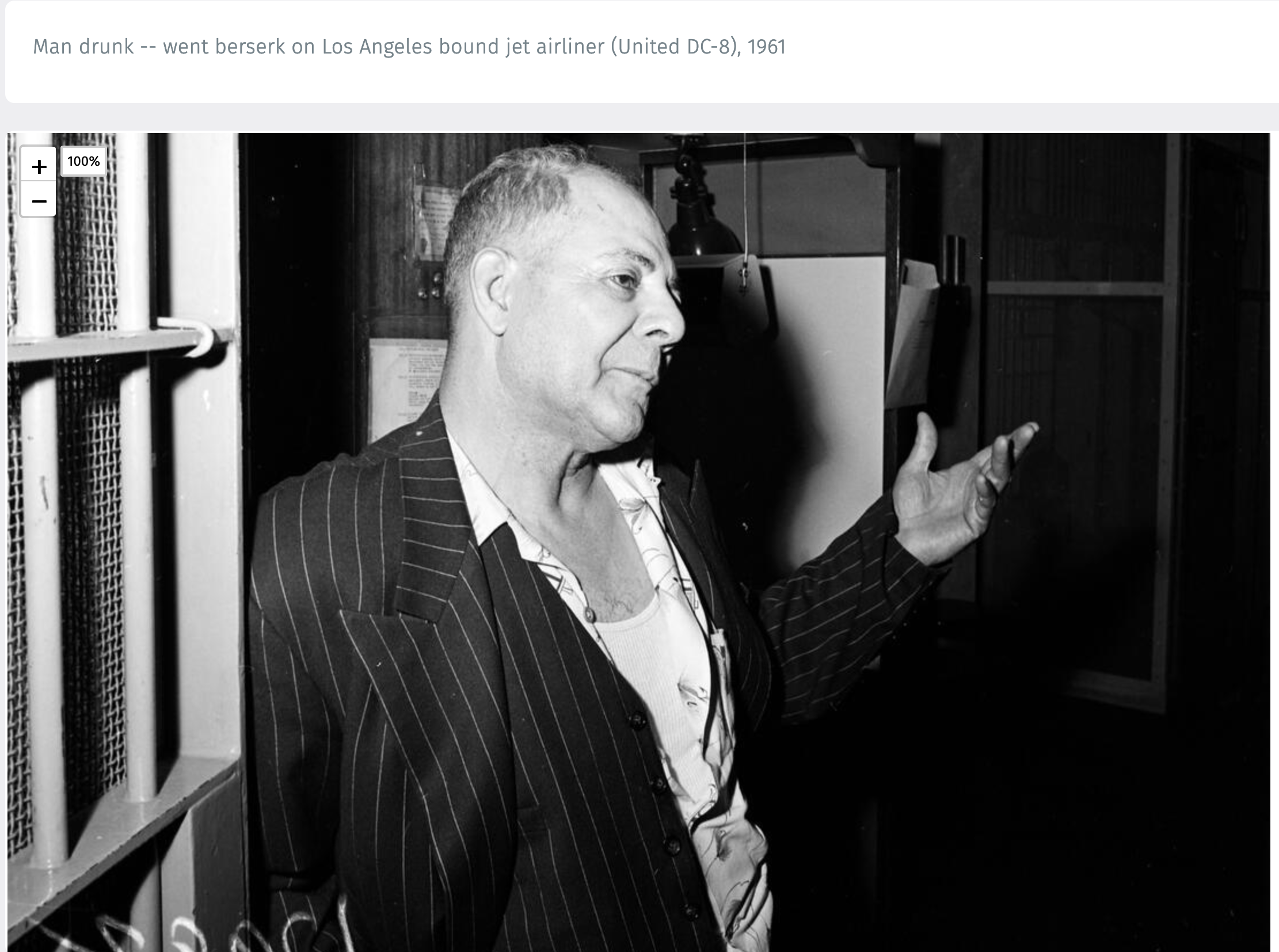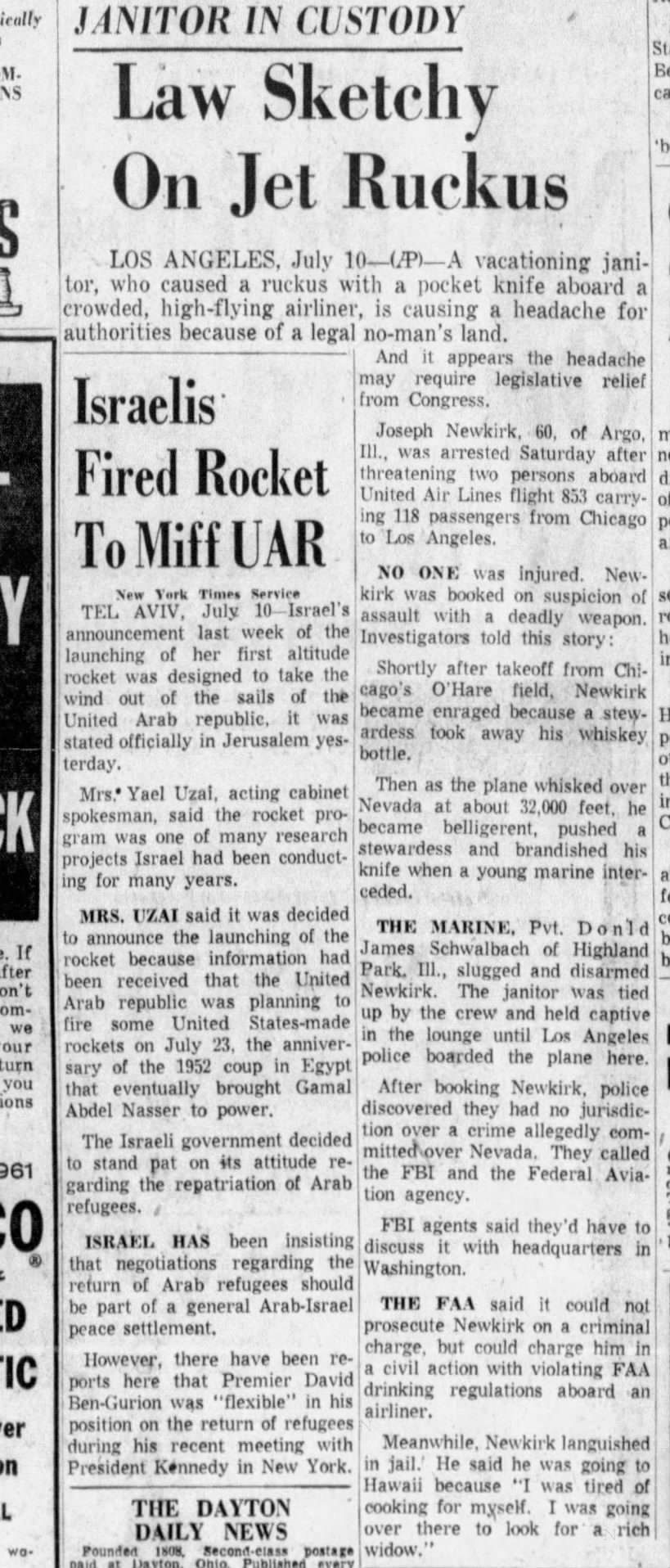Air Travel and Airlines
Foot-powered helicopter
I assume that the prize referenced in the clipping was the Kremer Prize, established in 1959 and eventually won in 1977.
Santa Ana Register - July 29, 1964
Details from Wikipedia:
Under the auspices of the Society, in 1959 the industrialist Henry Kremer offered the first Kremer prizes, of £5,000 for the first human-powered aircraft to fly a figure-of-eight course round two markers half-a-mile apart. It was conditional that the designer, entrant pilot, place of construction and flight must all be British. In 1973 Kremer increased the prize to £50,000 and opened it to all nationalities, to stimulate interest.
The first Kremer prize of £50,000 was won on 23 August 1977 by Dr. Paul MacCready when his Gossamer Condor, piloted by Bryan Allen, was the first human-powered aircraft to fly a figure eight around two markers one half mile apart, starting and ending the course at least 10 feet (3.0 m) above the ground.
Posted By: Alex - Fri Jul 26, 2024 -
Comments (0)
Category: Awards, Prizes, Competitions and Contests, Inventions, Air Travel and Airlines, 1960s
On Course, On The Glide Path…
Learn about flight navigation by listening to a record. Released in 1960 by Aero-Progress, Inc.You can listen to it online at the Internet Archive.


Posted By: Alex - Mon Jul 08, 2024 -
Comments (0)
Category: Vinyl Albums and Other Media Recordings, Air Travel and Airlines, 1960s
Passenger safety pods
Landon Tinder had a plan to make air travel safer by putting passengers inside near-indestructible pods. The plane could crash and the pods, he claimed, would survive.Details from the Chicago Tribune (Aug 27, 1989):
Each of Tinder's "passenger pods" would be equipped with its own airtight door, crash bag, cooling system, shock-absorbent shell and oxygen supply.
In the event of a crash or terrorist threat, the pod would seal itself off and the air bag would engage—all in two to three seconds. The 5-inch-thick honeycomb shell of aluminum, fiberglass and titanium could withstand temperatures up to 1,500 degrees Fahrenheit for more than 20 minutes. If the plane crashes in water, the pod would float.
"The aircraft around it can perish; this will stand strong," Tinder said.

Why the airlines didn't like his idea:
At $40,000 a seat, airlines would have to pay about $2 million to fit each plane with ALPS containers. More importantly, the system would reduce each plane's seating capacity by 19 to 28 percent—a proposition that makes industry analysts profoundly skeptical.
"It would ruin the operating economics of every known airline," said Paul Turk of AV-MARK, a consulting firm specializing in airline economics.

Santa Cruz Sentinel - Aug 7, 1989
Posted By: Alex - Tue Jun 11, 2024 -
Comments (2)
Category: Air Travel and Airlines, 1980s
TWA’s Foreign Accent Flights
In 1968, TWA introduced "foreign accent flights" on its domestic service. Travelers could choose to go on a French, British, Italian, or American-themed flight. The stewardesses were dressed in uniforms inspired by the respective countries. For instance, on the British flights the stewardesses wore an "English serving wench" outfit.
Time - Apr 24, 1968
More info from TWA Museum Guides Blog:
These "wear once and dispose" dresses were designed as wrap-arounds, secured with velcro fasteners. Hostesses typically carried a pair of scissors and tape to adjust the length. The promotion was short-lived. Logistical problems involving coordination of the dresses with the flight's theme developed and supply problems meant later uniforms had to be constructed with a lighter-weight paper, which was more prone to tearing. Some senior hostesses were reluctant to wear the dresses, including legendary flight attendant, Ida Staggers. Ms. Staggers, hired in 1936, was not pleased with this promotional role. Despite a large financial outlay for logistics and advertising, the program died quietly, never making it past 1968.

Hollywood Studio Magazine - July 1968

Sports Illustrated - Mar 25, 1968
Posted By: Alex - Tue Jun 04, 2024 -
Comments (3)
Category: Fashion, Air Travel and Airlines, 1960s
Rooftop Runway
Landing a plane on a giant treadmill mounted on top of a skyscraper. What could possibly go wrong?
Modern Mechanics - Feb 1930
Posted By: Alex - Sun May 12, 2024 -
Comments (0)
Category: Architecture, Air Travel and Airlines, 1930s
Wizz Air to fly on human waste
So there really is a European airline named Wizz Air (I had to check wikipedia to make sure it was real), and it recently announced that by 2030 "up to 10% of its flights could be powered by sustainable aviation fuel (SAF) derived from human waste." From msn.com:
Posted By: Alex - Fri Apr 19, 2024 -
Comments (0)
Category: Excrement, Air Travel and Airlines
Defecation relief unit for aeroplane personnel
How do fighter pilots poop while in the air? I think the answer is that they try very hard not to, because if they have to go, they're going in their flight suit. Back in the 1950s Constantin Paul Lent, et al., tried to come up with an alternative. From their patent (No. 2,749,558):Comparatively speaking it is an easy matter to provide adequate latrines for the men in the forces on land and sea. When the time comes to eliminate, one just walks to the nearest comfort station. But in the Air Force the problem of elimination can not be always solved that easily especially by aviation pilots...
The applicants are cognizant that there are relief tubes provided on most all jet planes for urinating, but no single seat aircraft is equipped with a safe and sure means for defecation. When the pilot of the jet, due to accident or enemy action needs to eliminate, the problem of defecation becomes acute. The pilot must wait until he lands his craft; and quite often he must remain aloft for a considerable length of time before he has a chance to visit a comfort station on the ground. In many cases due to the physiological and psychological effects produced on the pilot by enemy action, he is forced to eliminate even before he has a chance to land his plane.


Posted By: Alex - Sun Mar 24, 2024 -
Comments (0)
Category: Flight, Patents, Excrement, Air Travel and Airlines, 1950s
The Flying Flea
Wikipedia page.
Posted By: Paul - Fri Dec 15, 2023 -
Comments (3)
Category: Eccentrics, Hobbies and DIY, Inventions, Air Travel and Airlines, 1930s
Early Bad Airline Passenger Behavior
I wonder what the first instance of bad behavior on a commercial flight might be? Such an incident probably happened as soon as commercial flights began. In any case, here's an early one.



Posted By: Paul - Mon Nov 13, 2023 -
Comments (3)
Category: Misbehavior, Rebellion, Acting-out and General Naughtiness, Air Travel and Airlines, 1960s
Combination Pillow and Crash Helmet
"The device thus formed is useful as a courtesy pillow for the comfort of airline passengers, and doubles as a crash helmet which may be put over the head of the passenger when he is forewarned of an impending crash landing."More info: Patent No. 3,538,508

Posted By: Alex - Sat Sep 23, 2023 -
Comments (0)
Category: Patents, Air Travel and Airlines, 1970s

| Who We Are |
|---|
| Alex Boese Alex is the creator and curator of the Museum of Hoaxes. He's also the author of various weird, non-fiction, science-themed books such as Elephants on Acid and Psychedelic Apes. Paul Di Filippo Paul has been paid to put weird ideas into fictional form for over thirty years, in his career as a noted science fiction writer. He has recently begun blogging on many curious topics with three fellow writers at The Inferior 4+1. Contact Us |




